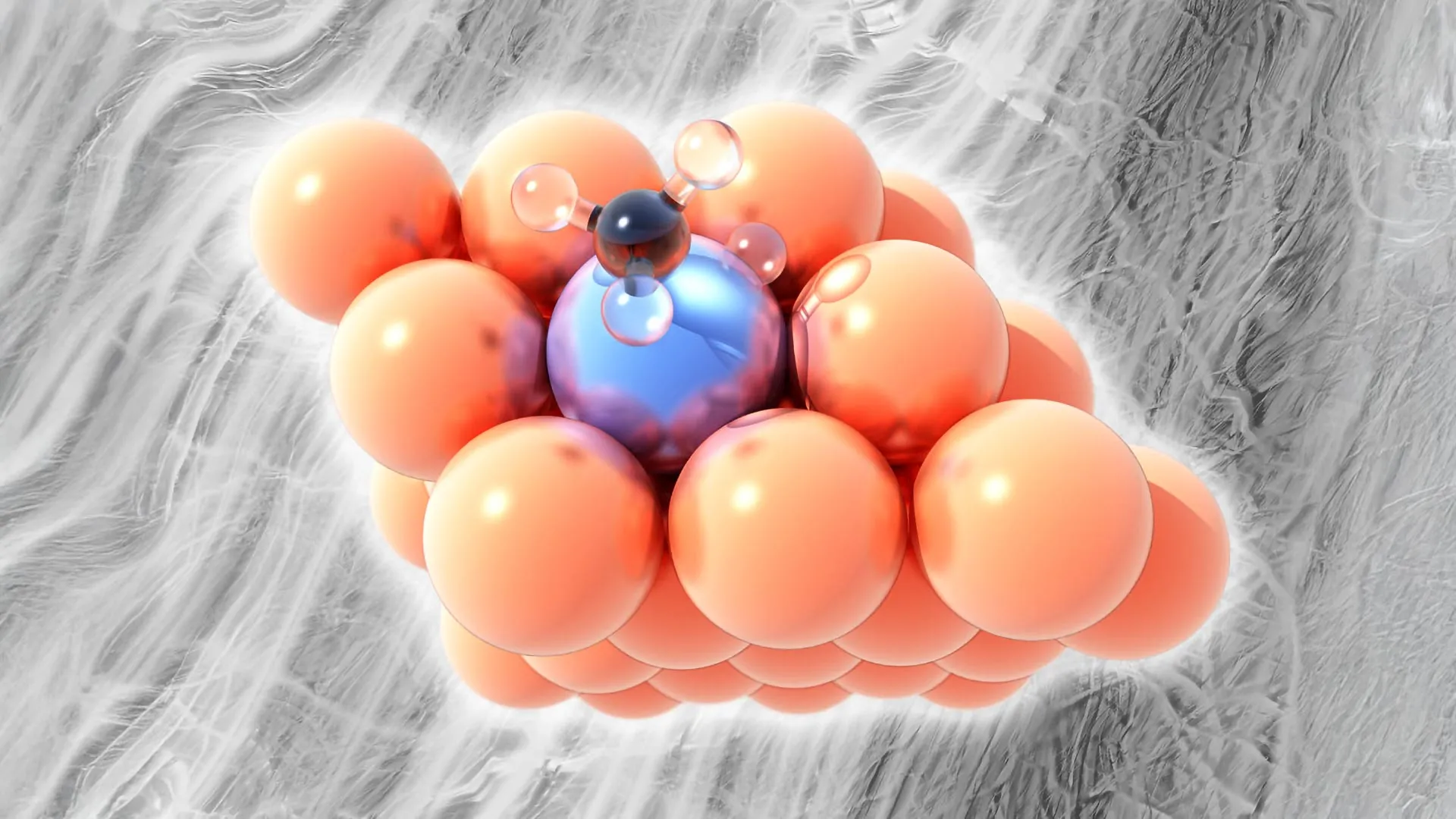Scientists crack indole’s toughest bond with copper, unlocking new medicines
A cost-effective copper-catalyzed reaction enables selective modification at the C5 position of the indole ring, a backbone for pharmaceutical compounds.
- Date:
- August 26, 2025
- Source:
- Chiba University
- Summary:
- Scientists have cracked one of chemistry’s toughest challenges with indoles, using copper to unlock a spot once thought too stubborn to change. The discovery could pave the way for easier, cheaper drug development.
- Share:

Indole, a molecule made up of a six-membered benzene ring fused to a five-membered ring containing nitrogen, forms the core structure of many biologically active compounds. Derivatives of indole, where hydrogen atoms are replaced by various chemical groups, are naturally produced by plants, fungi, and even the human body.
Due to their properties, indoles have gained attention as a backbone for synthesizing a wide variety of drugs. Since 2015, the U.S. Food and Drug Administration has approved 14 indole drugs to treat conditions, such as migraines, infections, and hypertension. Chemists have developed many strategies to attach different chemical groups to indoles. Some approaches introduce new groups directly onto the ring, while others involve temporary structural changes through intermediates. However, modifying specific positions on the indole ring, such as the C5 carbon, remains a challenge due to its low reactivity.
In a recent study, researchers at Chiba University, Japan, reported a method for selectively attaching an alkyl group to the C5 position of indole using a relatively inexpensive copper-based catalyst, which produced the desired product in yields of up to 91%. This method offers a more affordable and scalable approach for modifying indoles, which could be especially valuable in drug development.
The study, led by Associate Professor Shingo Harada, included Mr. Tomohiro Isono, B.Pharm., Ms. Mai Yanagawa, M.Pharm., and Professor Tetsuhiro Nemoto from the Graduate School of Pharmaceutical Sciences at Chiba University, and was published online in the journal Chemical Science.
"We developed a direct, regioselective C5-H functionalization reaction of indoles under copper catalysis. The resulting compounds contain structural features commonly found in natural indole alkaloids and drug molecules, highlighting the usefulness of this approach for making biologically important compounds," says Dr. Harada.
The reaction uses carbenes, highly reactive carbon species that can form new carbon-carbon bonds. In an earlier study, the team used rhodium-based carbenes to attach groups at the C4 position of indole, guided by unsaturated enone groups placed at the 3-position. In this study, they used a similar strategy but altered the reaction conditions to target the C5 position instead.
They tested the reaction using a model compound, N-benzyl indole with an enone group, together with dimethyl α-diazomalonates as the carbene source and different combinations of rhodium, copper, and silver salts as catalysts. Initially, the desired C5-functionalized product formed only in small amounts, with yields up to 18%. However, when they used a combination of copper and silver salts (Cu(OAc)2·H2O and AgSbF6), the yield rose to 62%. Upon carrying out further optimizations, such as adjusting the solvent volume and increasing the concentration, they improved the yield to 77%.
The reaction proved to be highly versatile, working with a wide range of indoles. When the enone group was replaced at the 3-position with a benzoyl group, the yield increased to 91%. Successful reactions were also observed with indoles bearing other substituents, such as methoxybenzyl, allyl, and phenyl groups, opening the door to the synthesis of structurally diverse molecules.
To uncover the reaction mechanism, the team carried out quantum chemical calculations, which suggested that the carbene does not react directly at C5. Instead, it first forms a bond at the C4 position, creating a strained three-membered ring. This intermediate then rearranges, shifting the new bond to the C5 position. The copper catalyst plays a critical role in making this pathway possible by stabilizing the intermediate and lowering the energy barrier for the rearrangement.
This copper-catalyzed strategy offers a reliable and cost-effective approach for modifying indoles at the C5 position, producing compounds that closely resemble biologically active indole-based agents. Dr. Harada highlights the method's potential for drug discovery by stating, "While it may not cause a significant shift right away, it could foster steady progress in drug discovery, leading to a small yet beneficial long-term impact."
The team is continuing its research, exploring other metal-carbene reactions to develop more selective and efficient strategies for constructing indole-based molecules that might one day contribute to the treatment of specific diseases.
Story Source:
Materials provided by Chiba University. Note: Content may be edited for style and length.
Journal Reference:
- Tomohiro Isono, Shingo Harada, Mai Yanagawa, Tetsuhiro Nemoto. Copper-catalyzed direct regioselective C5–H alkylation reactions of functionalized indoles with α-diazomalonates. Chemical Science, 2025; 16 (33): 14967 DOI: 10.1039/D5SC03417E
Cite This Page: